In this tutorial, you will learn how to work with short rows in Tunisian crochet in a variety of situations, which will be useful for the Macaw wings shawl TCAL.
Before you start making short rows in more complex ways, learn about forward pass short rows here.
Short rows can be made in various places, including in the foundation chain of a project, as well as over any kind of stitch.
In this tutorial you will have visual representation of:
- Working a short row in the foundation chain
- Working subsequent short rows in the foundation chain
- Working short rows over a long row of Tunisian purl stitches (Tps)
The first two parts of this tutorial relate to the beginning of the pattern, where in the first section you keep picking up loops in the foundation chain to create the first feather.
Contents
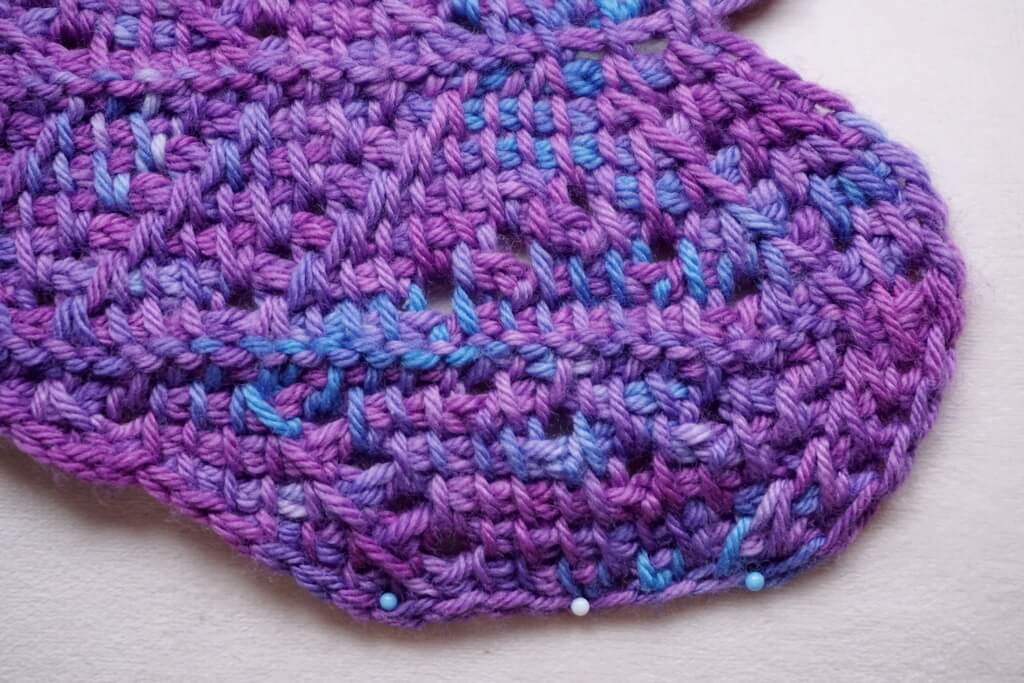
Abbreviations
The following tutorial uses some common Tunisian crochet abbreviations, explained in detail below.
- Ch – Chain;
- St(s) – stitch(es);
- Tps – Tunisian purl stitch: YU, insert the hook under the vertical bar of the next St, YO and pull up a loop;
- Tss – Tunisian simple stitch: in foundation chain, insert hook into the back bump of the next Ch, YO and pull up a loop; in other rows, insert hook under the vertical bar of the next St, YO and pull up a loop;
- YO – yarn over;
- YU – yarn under: bring the yarn under and to the front of the hook.
Working a short row in the foundation chain
The first few rows are worked in the starting chain and use the short row technique.
You will make a longer chain than required for the first row and continue using the same chain for several rows.
See the full instructions for Row 1 of the pattern here (coming soon).
Chain the required number of chains and start picking up loops as instructed by the pattern, until you reach the end of the row.
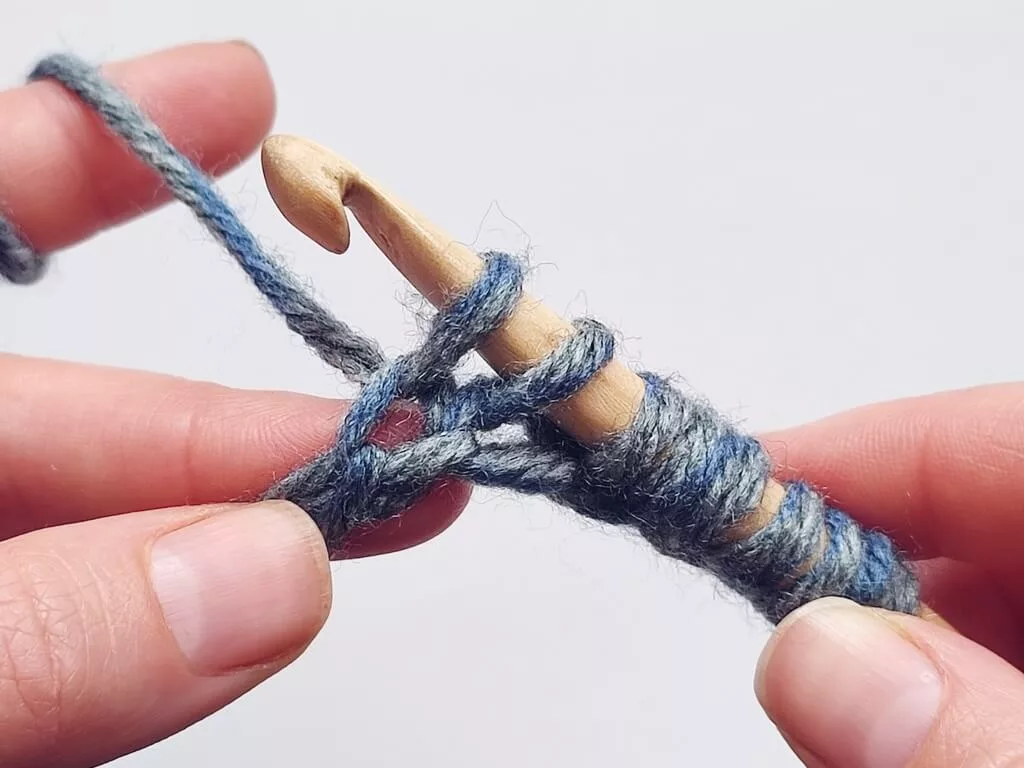
Then you do a short row return, by repeating [YO and pull through 2 loops on hook] until one loop is left.
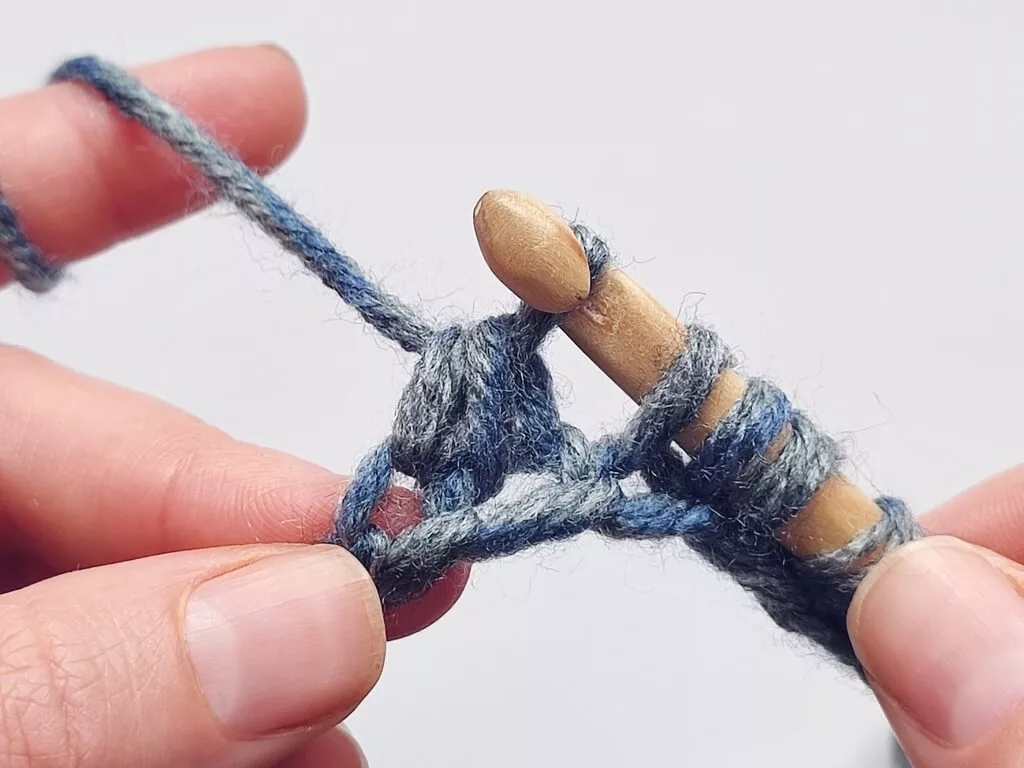
When you do this, you will make a little wedge at the end of the short row, so it doesn’t create bulk in the fabric.
Working subsequent short rows in the foundation chain
For the next row, you will have to pick up more loops, including some in the foundation row.
When you reach the end of a short row and need to pick up the next stitches, look at the work first.
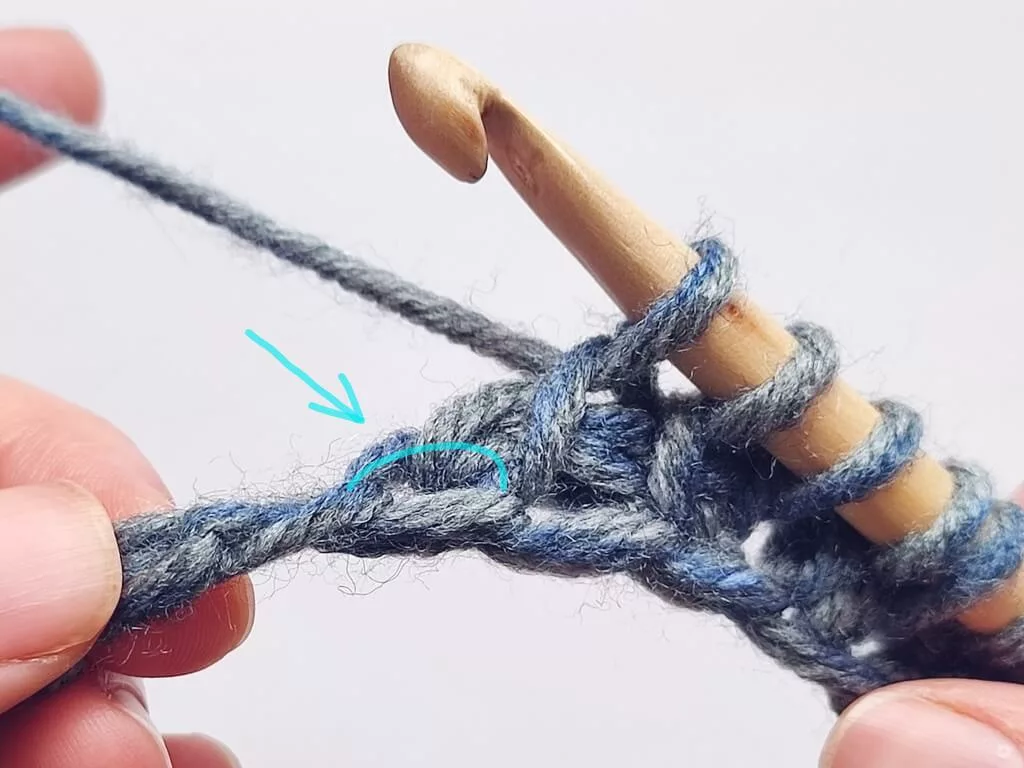
You will not work into the diagonal stitch that was the end of the short row, but in the chain that you picked up that stitch in, highlighted in blue in the photo above.
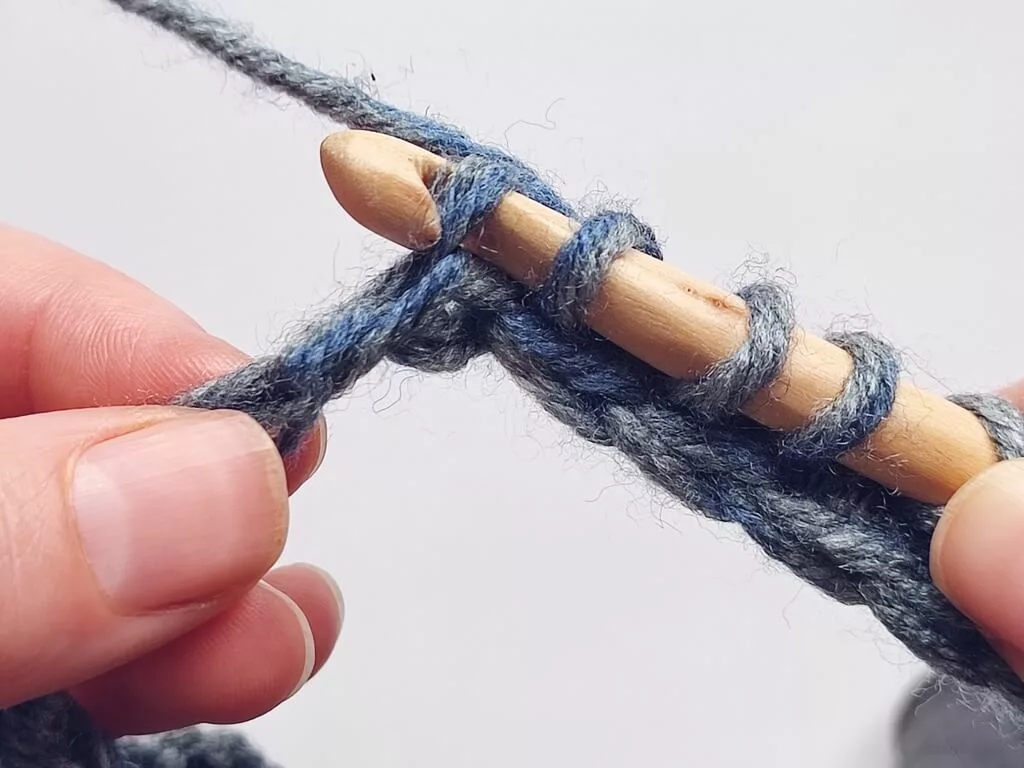
Insert the hook into the back bump of the same chain and draw up a loop.
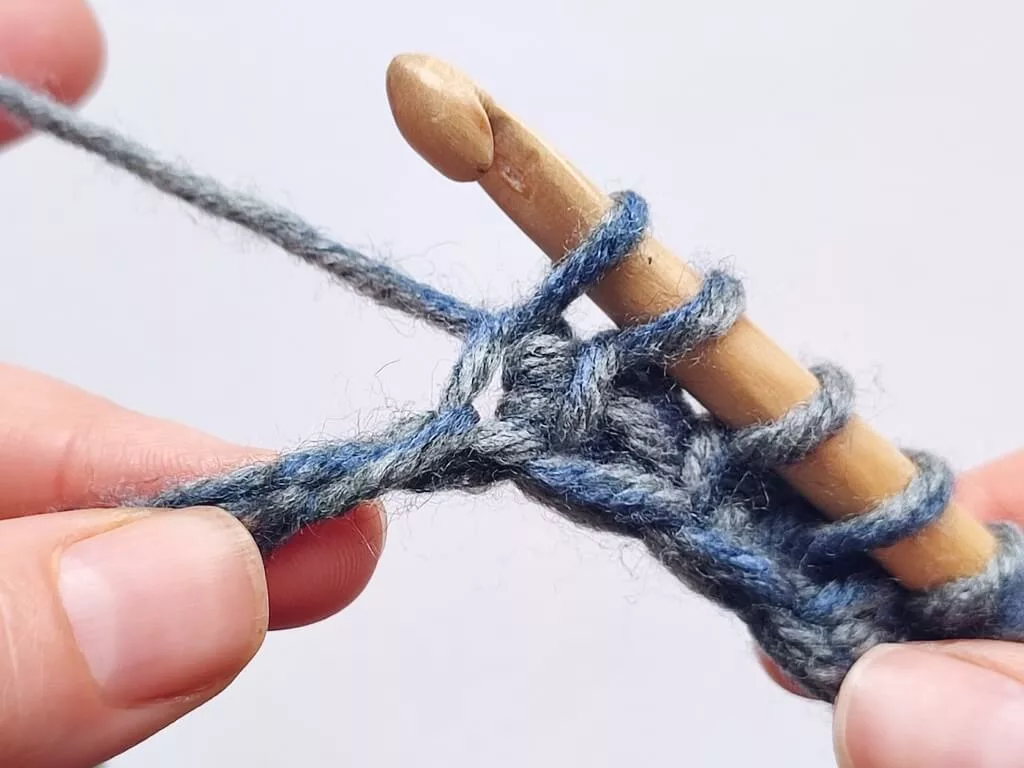
This is the end of the short row and the new stitch in the same place.
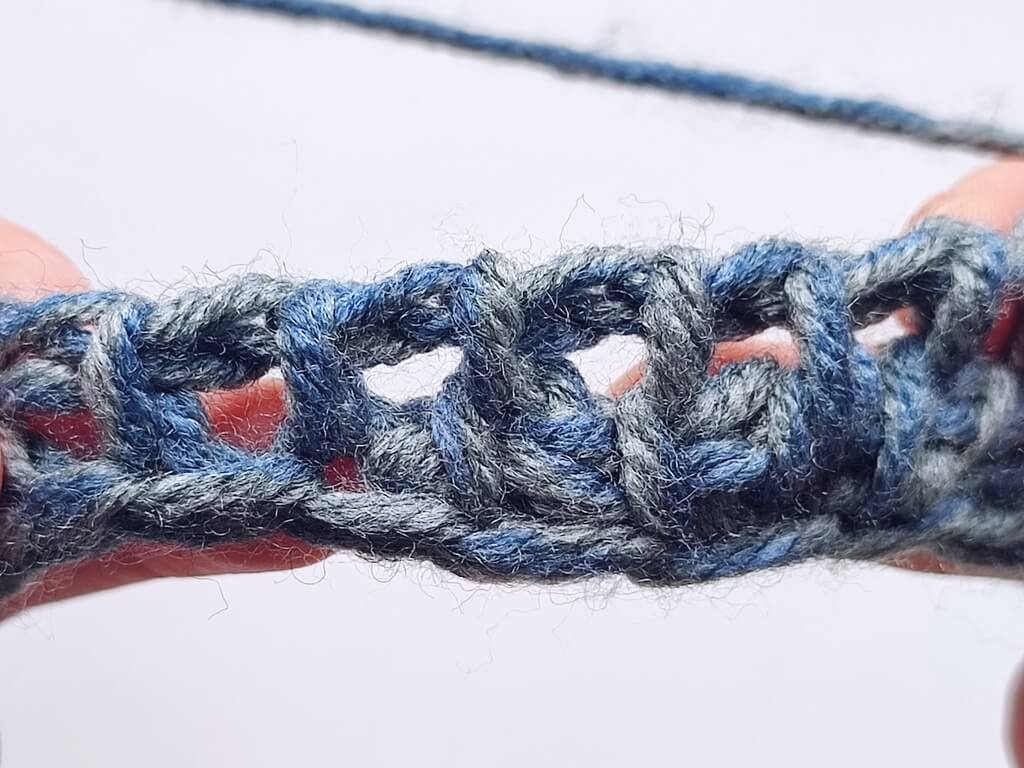
This is what the short row and the new row look like after the return pass.
You can notice a wedge between the foundation and the second row.
Short rows in Tunisian purl stitches
After the first section of the pattern, you will start working short rows in a row of purl stitches.
You can use a stitch marker to mark the end of the short rows to help you keep track of them.
To do this, you need to look at the last stitch you worked into for the short row.
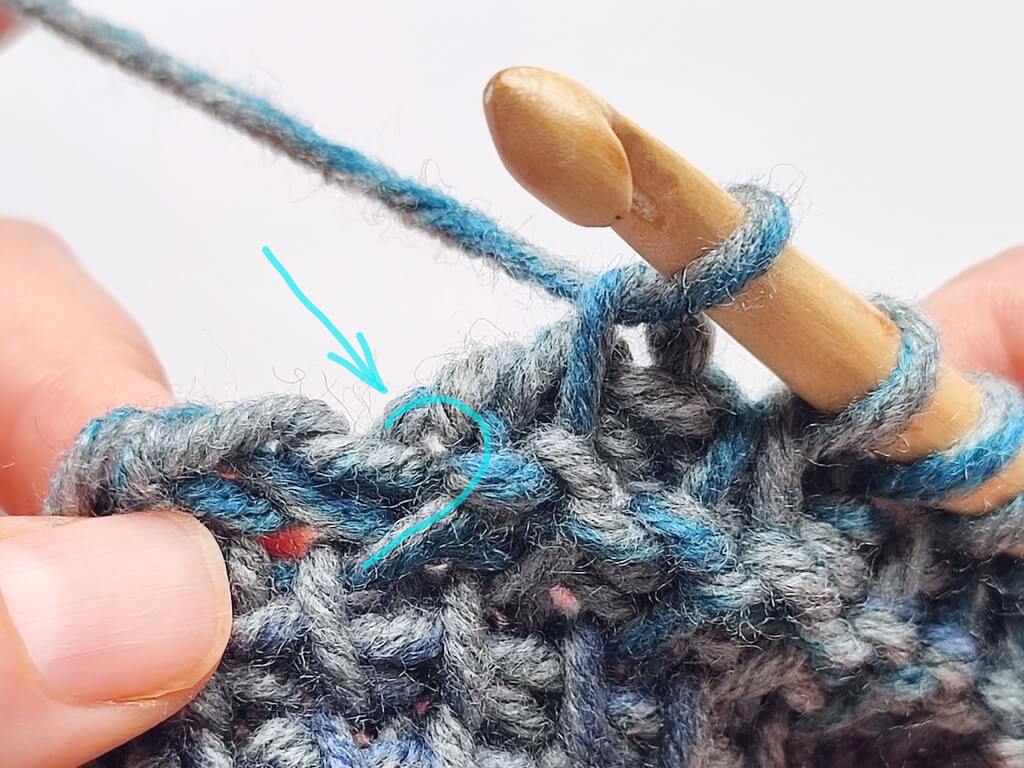
In the photo above you can see one Tps highlighted. On the previous row, the last stitch was picked up in this stitch.
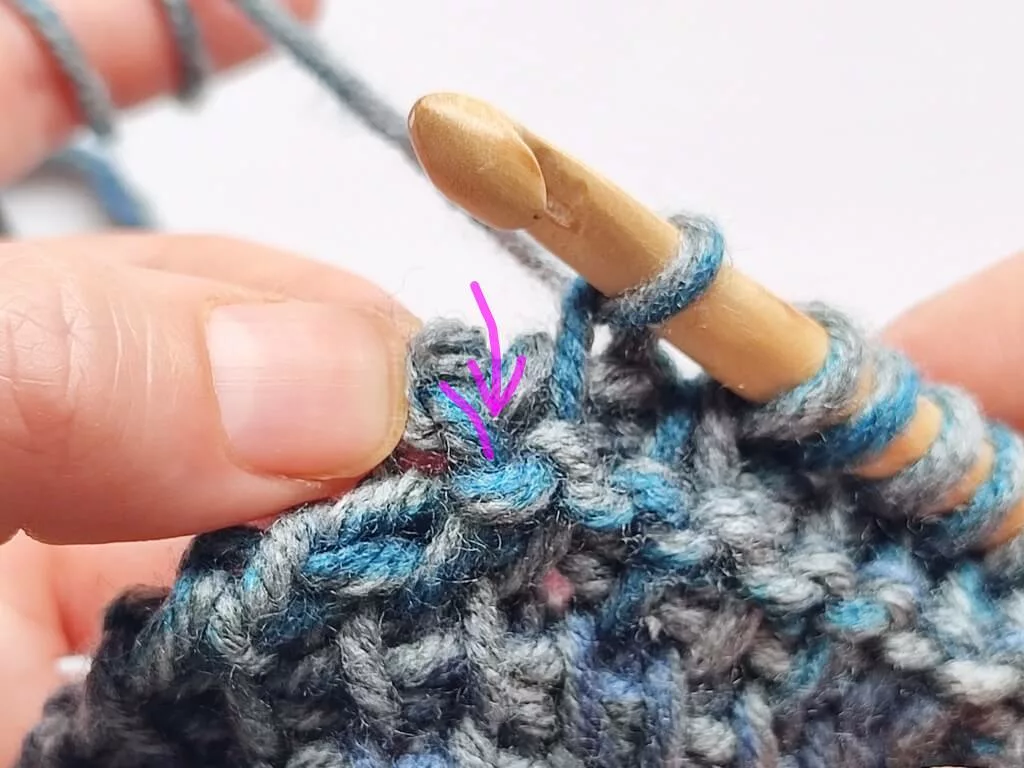
Identify the vertical bar of this stitch.
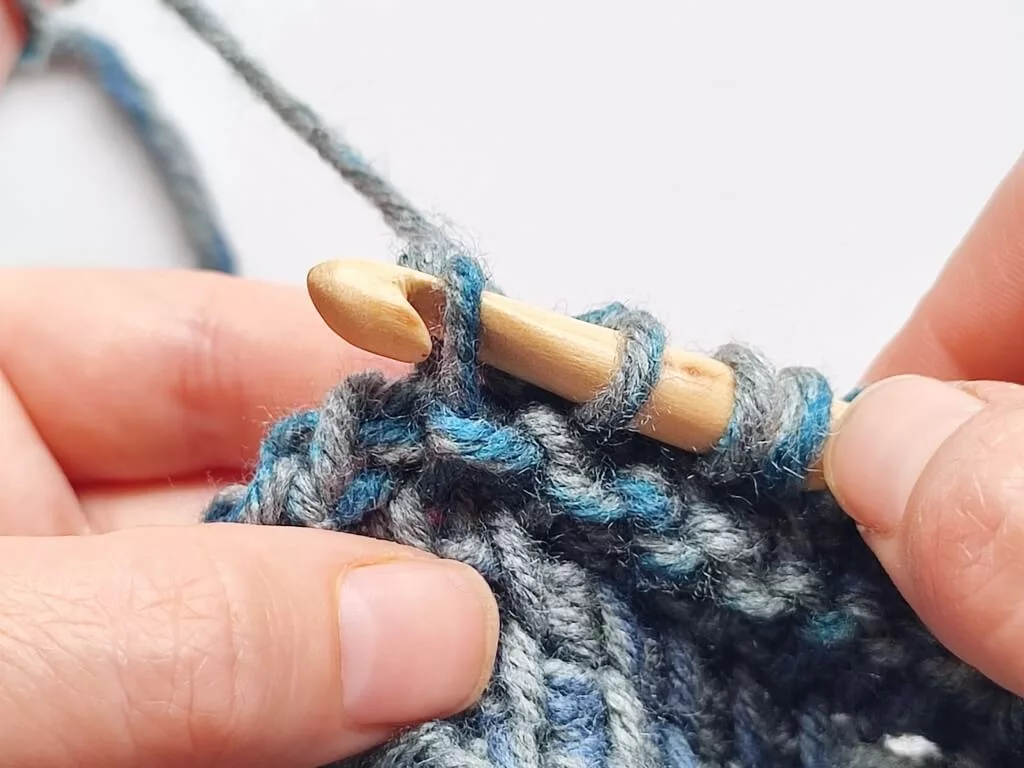
Insert the hook behind this bar.
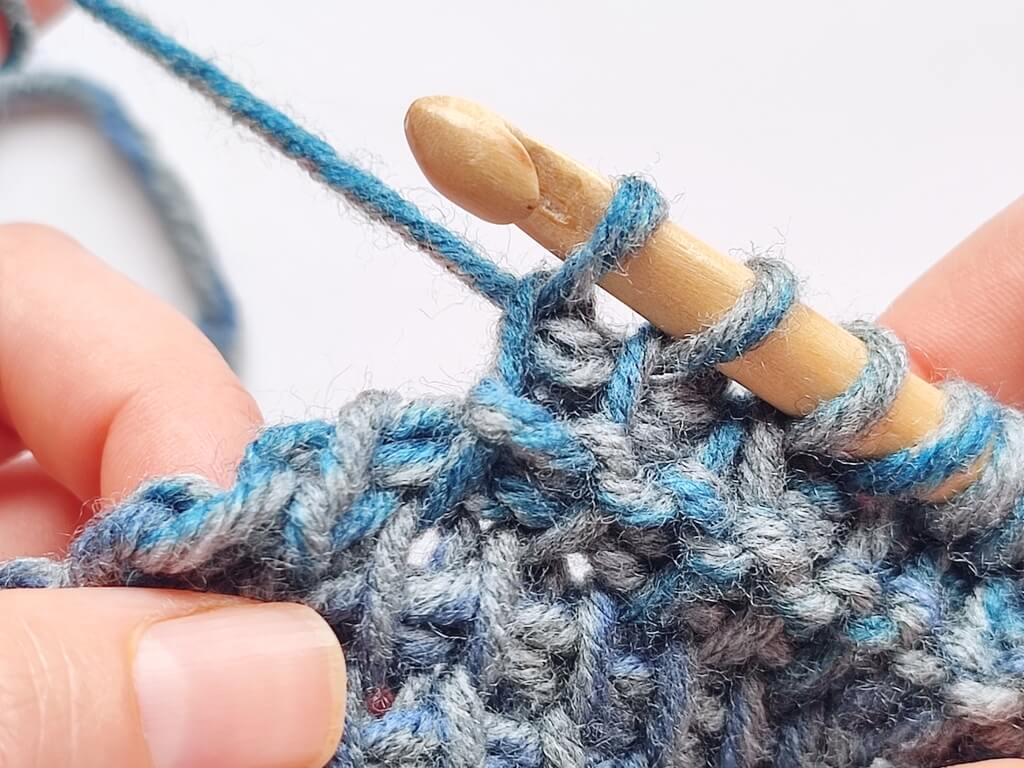
Then pull up a loop.
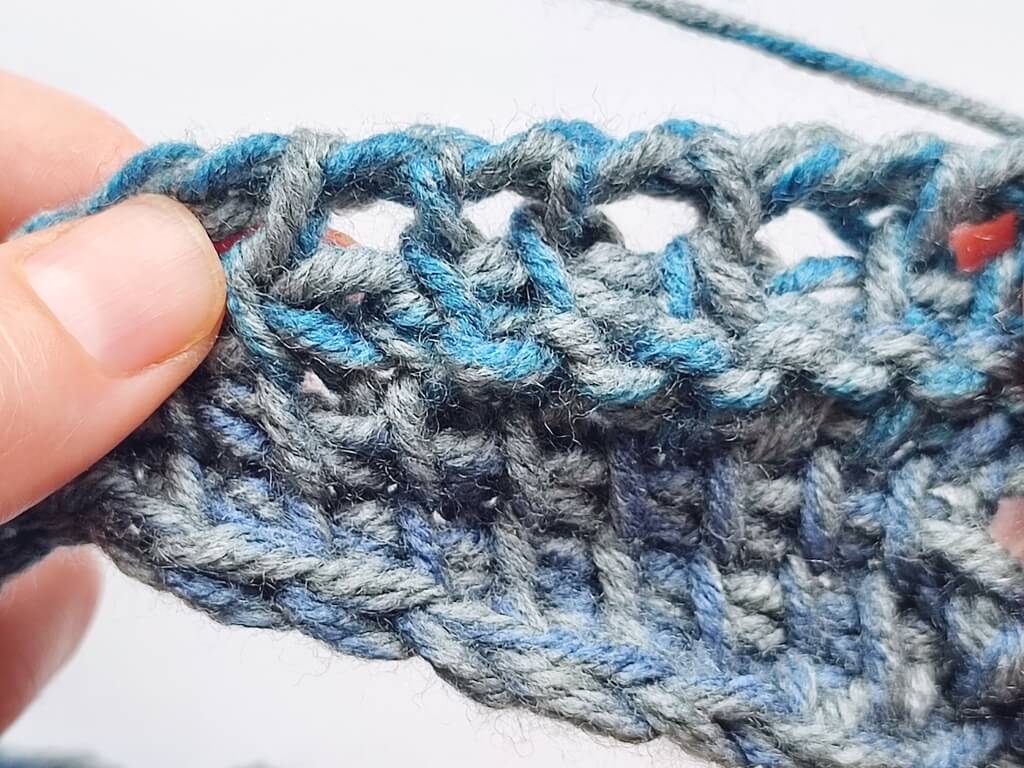
After the return pass is complete, it should look as a regular Tss.
Repeat this as many times as needed when making the rest of the short rows in the Macaw wings shawl pattern or other patterns that use these kinds of short rows.
Check out all the information about the Macaw wings shawl TCAL here:
Macaw wings shawl TCAL – Parts 12 & 13
Macaw wings shawl TCAL – Parts 10 & 11
Macaw wings shawl TCAL – Part 9
Macaw wings shawl TCAL – Part 8
Macaw wings shawl TCAL – Part 7
Macaw wings shawl TCAL – modified Part 7
Macaw wings shawl TCAL – Part 6
Macaw wings shawl TCAL – Part 5
Macaw wings shawl TCAL – Parts 3 & 4
Macaw wings shawl TCAL – Parts 1 & 2
If you liked this tutorial, sign up to my email updates below to get notified whenever I publish more tutorials about Tunisian crochet and regular crochet.
Hugs,
Andrea

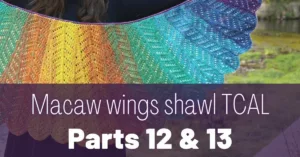
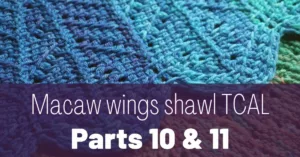
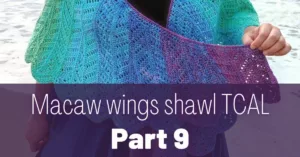

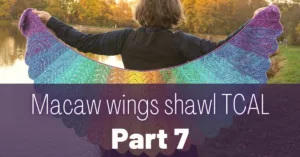


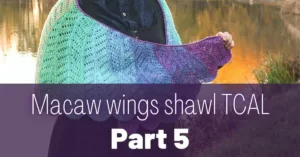
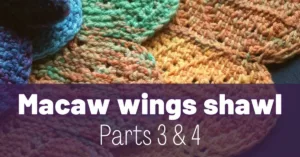
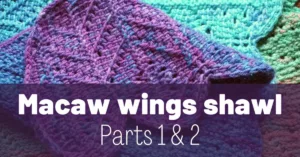

5 thoughts on “Tunisian crochet short rows in tricky stitches”